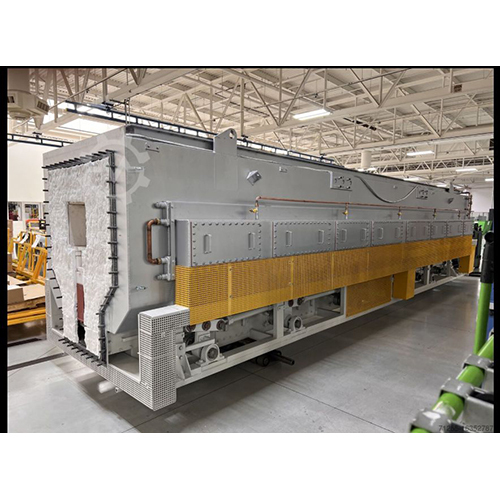Carburizing Hardening & Tempering Services
Carburizing Hardening & Tempering Services Specification
- Condition
- New
- Voltage
- 220-440 Volt (v)
- Product Type
- Carburizing Services
- Color
- Silver
- Warranty
- 1 Year
Carburizing Hardening & Tempering Services Trade Information
- Minimum Order Quantity
- 1 Unit
- Supply Ability
- 2000000 Units Per Day
- Delivery Time
- 2 Days
- Packaging Details
- Customers package
- Main Domestic Market
- All India
- Certifications
- ISO 9001: 2015, IATF 16949; 2016
About Carburizing Hardening & Tempering Services
Carburising is one of the most commonly performed steel heattreatments. Carburizing, also known as Case Hardening, is a heat treatmentprocess that improves the surface properties of steel components. By diffusingcarbon into the surface, carburizing creates a hardened case while maintainingthe toughness and strength of the core. This article explores the benefits,process, and applications of carburizing in various industries.
UnderstandingCarburizing
Carburizing is a heat treatment technique used primarily on lowcarbon steel parts after machining. It is also applied to high alloy steelbearings, gears, and other components. The process involves increasing thestrength and wear resistance of the steel by introducing carbon into itssurface.
The process of carburizing involves heating iron or steel to ahigh temperature, causing a change in the grain structure of the metal. Thischange allows the steel to absorb carbon, resulting in the formation of awear-resistant layer. Carburizing is widely used in the production of strongand safe metals.
During carburizing, the metal is heated in the presence of acarbon-bearing material like charcoal or carbon monoxide. The goal is to increasethe hardness of the metal. The carbon content in the affected area can varydepending on the duration and temperature of the process. Generally, longercarburizing times and higher temperatures lead to greater carbon diffusion anddeeper carbon penetration.
After the carburizing process, the iron or steel is rapidlycooled through quenching. This causes the outer surface, which has a highercarbon content, to become hard as it transforms from austenite to martensite.Meanwhile, the core of the metal remains soft and tough, maintaining a ferriticand/or pearlite microstructure.
Benefits ofCarburizing
Carburizing offers several advantages, including:
- Enhanced wear resistance: The hardened case formed during carburizing provides excellent resistance against wear, extending the lifespan of the component.
- Retained toughness: Despite the hardened surface, the core retains its toughness and strength, ensuring the component can withstand heavy loads and impact.
- Cost-effective: Carburizing allows the use of lower-cost materials that can be easily machined or formed before heat treatment, making it an economical choice for producing complex-shaped parts.
The surface became very hard, while theinterior or "core" of the part retained the toughness of low carbonsteel. The engineering of surfaces of components to improve the life andperformance of parts used in automobiles and aerospace engineering is an activearea of research. Thermomechanical surface engineering treatments will produceextensive rearrangements of atoms in metals and alloys and a correspondingmarked variation in physical, chemical and mechanical properties. Among themore important of these treatments are heat treatment processes such immersionhardening, induction hardening and case carburizing.
Automobilecomponents such as rack and pinion, gears, cam shaft valve rocker shafts andaxles, which require high fatigue resistance, are normally case hardened bycarburizing. The carburizing furnaces are either gas fired or electricallyheated. The carburizing temperature varies from 870 to 940 C the gasatmosphere for carburizing is produced from liquid or gaseous hydrocarbons suchas propane, butane or methane3. The study of process parameters inmetals during heat treatment has been of considerable interest for some years, butthere has been relatively little work on process variables during the surfacehardening process since controlling parameters incarburization is a complex problem. The major influencing parameters incarburization are the holding time, carburizing temperature, carbon potentialand the quench time in oil. The present work is focused on the effects ofcarburizing temperature and holding time on the mechanical properties ofcarburized mild steel.

- Minimum Order Quantity
- 1 Unit
- Supply Ability
- 2000000 Units Per Day
- Delivery Time
- 2 Days
- Main Domestic Market
- All India

Price:
- 50
- 100
- 200
- 250
- 500
- 1000+



